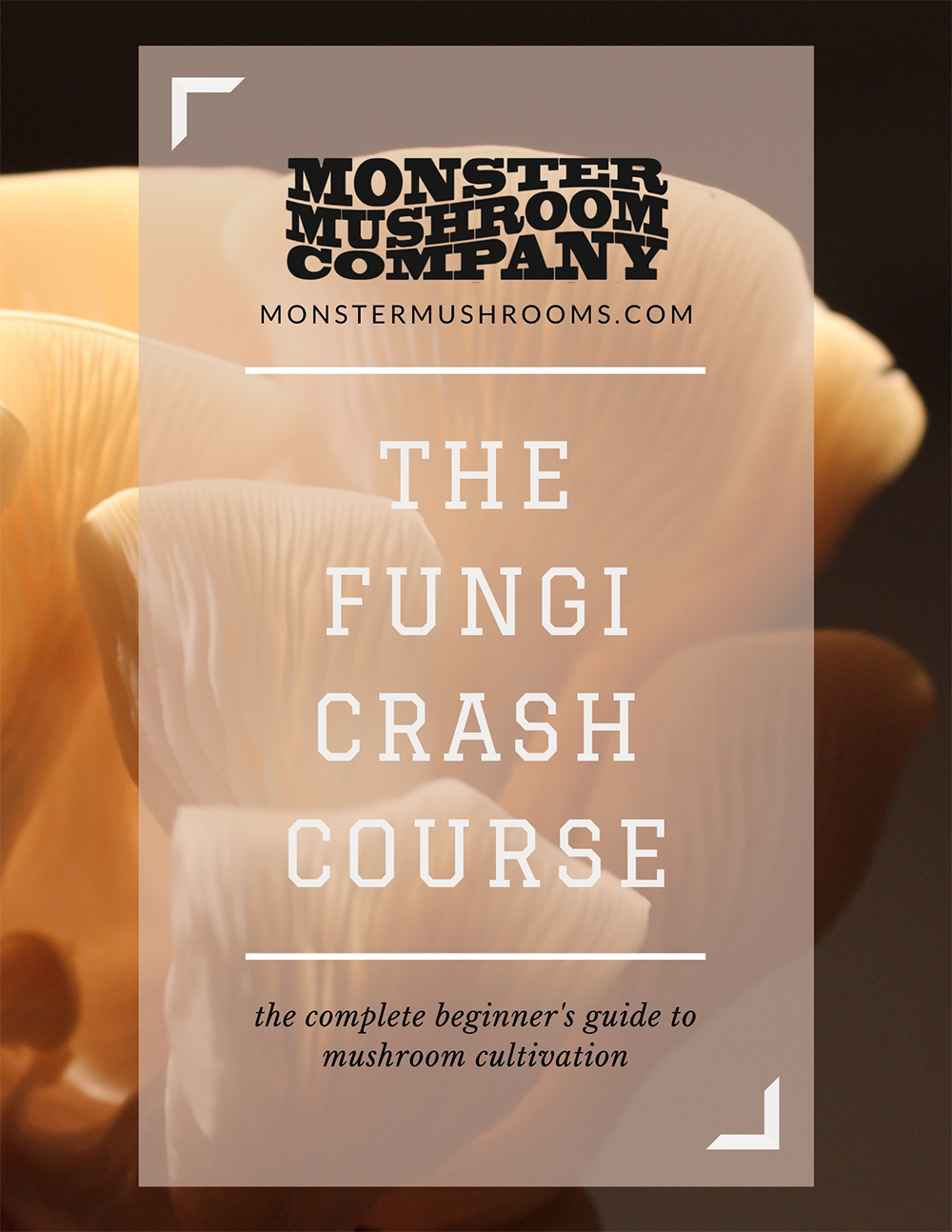Growing gourmet mushrooms at home is an attractive proposition. Imagine the thrill of harvesting your wholesome, umami-rich delicacies at their peak and enjoying their unparalleled freshness and flavor. Whether you’re most interested in elevating the complexity of your favorite recipes or taking advantage of the health and wellness potential of specific adaptogenic varieties, you can count on getting multiple pounds of some of nature’s most intriguing superfoods in a small amount of space – all you need is a bit of basic knowledge, a few simple tools, and the proper growing environment.
At Monster Mushroom Company, we’re on a mission to demystify and simplify the mushroom-growing experience to ensure home cultivation is accessible to everyone. After exploring the following guide explaining the similarities and differences between mushroom grow bags and spawn bags, consider taking a moment to download your free copy of our complete beginner’s guide to mushroom cultivation – “The Fungi Crash Course” – and explore our collection of instructional videos
Unveiling the Differences: How Spawn Bags & Grow Bags Compare
With minimal effort, you’ll find multiple resources highlighting the ease of cultivating mushrooms at home. Far too many, however, neglect to mention the many problems that can arise when mycelium and fruiting bodies are exposed to bacteria, fungi, and pests. Investing in grow and spawn bags is a cost-effective way to minimize risks and optimize the return on your time and attention.
In many ways, grow bags and spawn bags are similar. They’re easy to use, pre-sterilized, and minimize the risk of contamination during substrate preparation. Most are made from durable, heat-resistant, tear-resistant polypropylene. The best polypropylene bags for mushroom cultivation have built-in air filters to ensure proper air exchange. After browsing the following descriptions, it’s easy to see why it’s important to know which bag to use and when.
Mushroom Spawn Bags
Mushrooms propagate by producing spores rather than seeds. Companies offering gourmet mushroom spores often suspend them in a non-nutrient liquid growers use to inoculate a sterilized medium – known in mycology circles as spawning substrates – through a self-sealing port. The substrate promotes colonization. The successful colonization of an incubation bag produces substrate with a firm, compact texture, no visual patches of uncolonized material, and a robust earthy aroma – signs indicating the mycelium is ready for the next stage of development.
Mushroom Grow Bags
Mushroom grow bags are typically smaller than spawn bags and provide the ideal conditions for the colonized mycelium substrate to develop fruiting bodies – the edible portion of your gourmet mushrooms. A second substrate – a mushroom fruiting substrate – is thoroughly mixed with a portion of the mycelium spawn-dominant substrate. Each spawn bag produces enough mycelium to populate several grow bags. Many mushroom growers slash holes in the sides of their grow bags to encourage more fruiting bodies to emerge from the root-like mycelium.
The Similarities that Bind: Providing the Ideal Conditions for Spawn Bags & Grow Bags
Whether you’re inoculating spawn bags or grow bags, maintaining a clean, sterile workspace is essential for cultivation. In addition to sanitizing your growing area and equipment with isopropyl alcohol (or a similar disinfectant), it’s also important to ensure the sterility of your growing medium and the surrounding environment. Consider wearing gloves and a face mask or investing in a still air box.
Spawn bags and grow bags also require similar incubation conditions for optimal mycelium growth. Depending on the strain, grain spawn bags and grow bags typically require temperatures between 75-81°F. Spawn bags, however, require darkness. Exposing grow bags populated with mycelium spawn to natural or artificial light, on the other hand, triggers mushroom growth.
Begin Your Mycological Journey with Monster Mushrooms
Mushroom cultivators propagate mycelium in spawn bags, then introduce mycelium-propagated substrates into space-saving mushroom grow bags. Bags fitted with a filter patch allow for sufficient airflow while creating a controlled climate for optimal growth. To learn more about how to grow mushrooms in a grow bag, inoculate spawn grow bags, or find grow bag instructions, visit Monster Mushroom Company.
Monster Mushroom Company is known industry-wide for providing premium-quality organic materials, expert guidance, and an impressive assortment of products that make growing fresh mushrooms accessible to everyone—grow kits, all-in-one mushroom grow bags, grain spawn bags, growing supplies, and more. If you have questions about using grow bags or spawn bags we haven’t covered, call (720) 819-6794 or submit a contact form.
Then, consider signing up for our newsletter. You’ll get the latest industry news, Monster Mushroom product announcements, and advance notice of exclusive discounts. Just submit your email address and first name near the bottom of our home page and hit subscribe.

